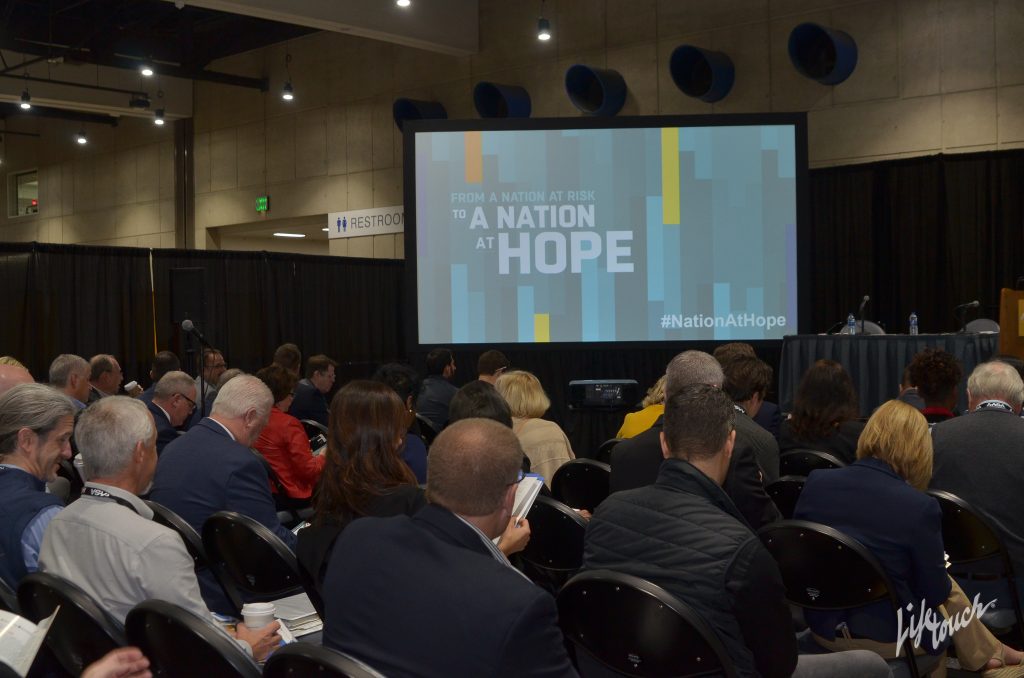Our education system is on the right track but still falling short in meeting the social-emotional needs of students, a panel of education leaders said at AASA’s national conference on Thursday.
Educators from across the nation packed the Knowledge Exchange Theater for “A Nation of Hope: Social and Emotional Learning Success,” with a panel composed of Timothy Shriver, chair of the Special Olympics; Sheldon Berman, superintendent in Andover, Mass.; and Gene Wilhoit, executive director of the University of Kentucky’s Center for Innovation in Education.
The panelists dug into the findings of a landmark 2019 report by the National Commission on Social, Emotional and Academic Development, which Shriver co-chaired alongside California Board of Education President Linda Darling-Hammond.
Social and emotional learning, while increasingly understood to be a key facet of childhood development, is still not receiving the attention it deserves in K-12 education, Shriver argued.
“We've been stuck in a lot of binaries,” he said. “You either do SEL or you do academics. You either do it in the classroom or you do it outside of class. These are all false choices.”
Shriver pointed to the commission’s nationwide research suggesting SEL actually may be more influential in determining academic success than any other factor.
“Social emotional skills are predictive of life skills. If we become socially and emotionally supported in early years, we are more likely to succeed later on,” Shriver said. “Just as we have social studies curriculum or math curriculum, we need SEL curriculum in our schools.”
Berman, who has led school districts in several states, agreed, saying a comprehensive systemic approach is needed.
“We need to do direct instruction of social emotional skills,” he said. “The task ahead of us is to create a responsive environment and caring community in the classroom itself.”
But what does that look like?
In Andover, Mass., Berman said schools are making strides through school-based “buddy programs,” home-based activities and lessons for students to bring home and engage with their parents, and schoolwide activities to promote anti-bullying efforts.
“At the end of the day, children are literally asked, ‘What was your experience today? What was one way somebody helped you? What was a positive experience you had?’” Berman explained.
Wilhoit, a former state education commissioner, supported the idea that SEL is not just an underlying theme of school-based instruction but rather its own key subject area that school staff will need to become experts in.
The three panelists agreed that restorative practices, while rarely mentioned just a decade ago, are also key to SEL outcomes. “How we discipline says so much about who we are, and what kind of community we have,” said Berman.
“The professional development made available to teachers is key and must be ongoing,” the veteran education leader said. “It can't be done in a day.”
The Aspen Institute’s National Commission on Social, Emotional, and Academic Development, after two years of research and discussion, issued sweeping recommendations in January 2019 to strengthen SEL. The final report includes recommendations in research, practice, and policy for helping states and local communities close the gap between what we know about how learning happens and the learning experiences young people are engaged in every day.
(Dan Howe is the public information supervisor for the San Diego Unified School District.)


